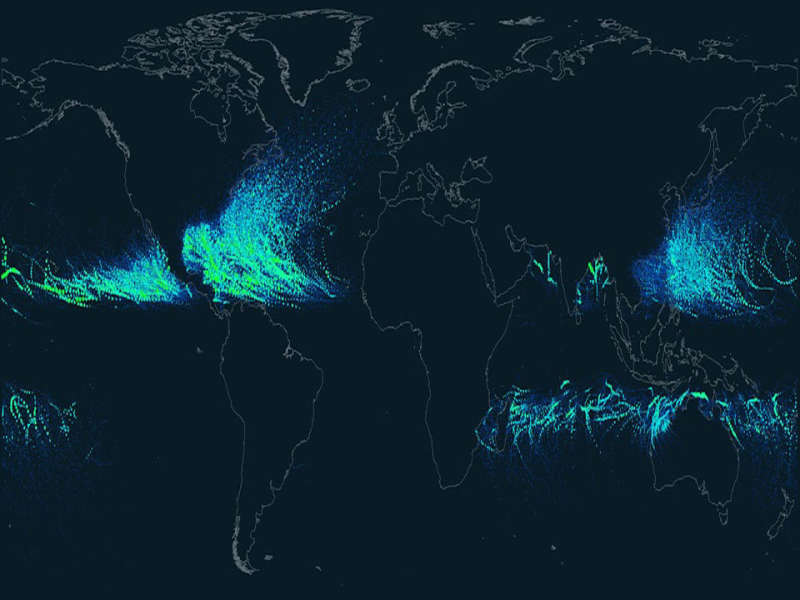Credit & Copyright: John Nelson,
IDV Solutions
Explanation:
Should you be worried about hurricanes?
To find out, it is useful to know where
hurricanes have gone
in the past.
The above Earth map
shows the path of every hurricane reported since 1851,
Although striking, a growing incompleteness exists in the data the further one looks
back in time.
The above map graphically indicates that hurricanes -- sometimes called cyclones
or typhoons depending on where they form -- usually occur
over water, which makes sense since evaporating warm water
gives them energy.
The
map
also shows that hurricanes never cross -- or even occur very near -- the
Earth's equator, since the Coriolis effect
goes to zero there, and hurricanes need the Coriolis force to circulate.
The Coriolis force also
causes
hurricane paths to arc away from the equator.
Although incompleteness fogs long term trends and the
prevalence of hurricanes remains a topic of research,
evidence is accumulating that hurricanes are, on the average,
more common
and more powerful in the North Atlantic Ocean over the past 20 years.
Astronomy Teachers Wanted:
Join NASA's
NITARP
1999 2000 2001 2002 2003 2004 2005 2006 2007 2008 2009 2010 2011 2012 2013 2014 2015 2016 2017 2018 2019 2020 2021 2022 2023 2024 2025 |
Yanvar' Fevral' Mart Aprel' Mai Iyun' Iyul' Avgust Sentyabr' Oktyabr' Noyabr' Dekabr' |
NASA Web Site Statements, Warnings, and Disclaimers
NASA Official: Jay Norris. Specific rights apply.
A service of: LHEA at NASA / GSFC
& Michigan Tech. U.
|
Publikacii s klyuchevymi slovami:
Earth - climate - Zemlya - uragan
Publikacii so slovami: Earth - climate - Zemlya - uragan | |
Sm. takzhe:
Vse publikacii na tu zhe temu >> | |
